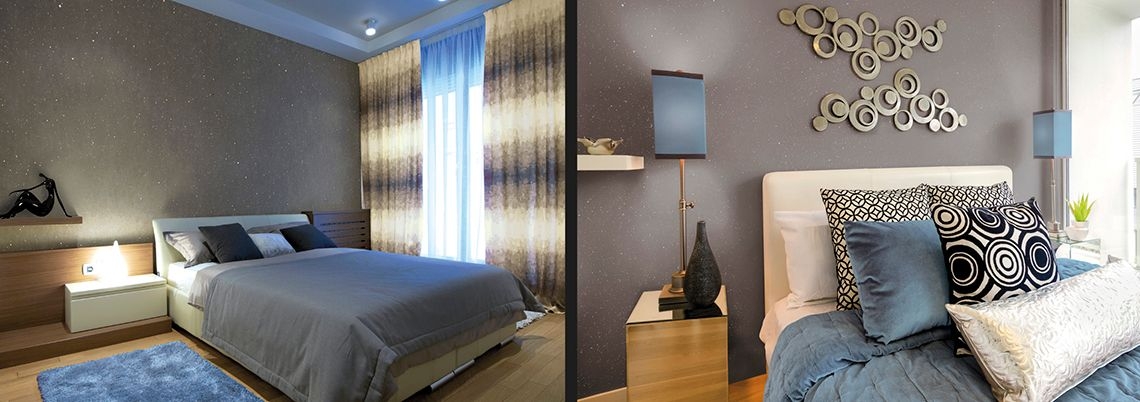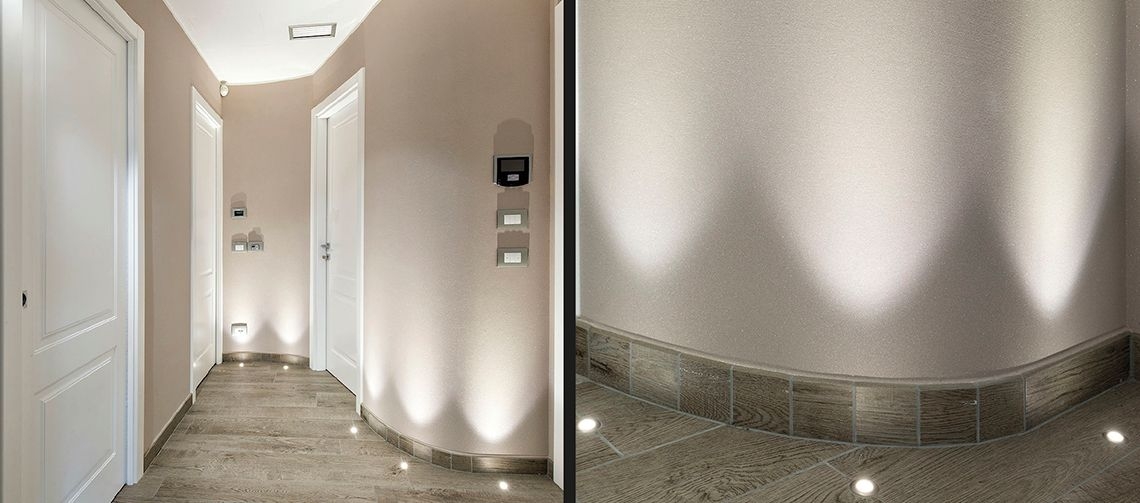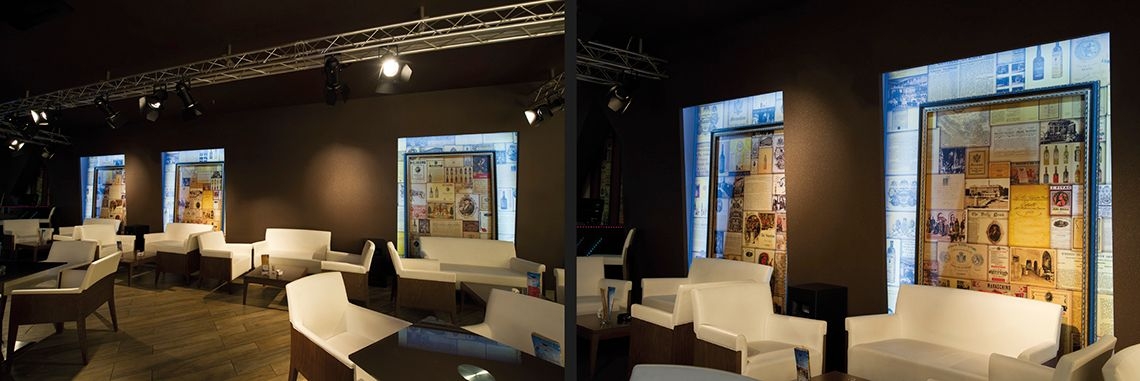Glitter-effect paints: beautiful wall paints that glimmer
What connects glitter-effect wall paints, the state of New Jersey, rubbish and strips of transparent film with a thickness equal to half the wavelength of light?
A lot more than you might expect!
In an entertaining article published in the New York Times, journalist Caity Weaver recounts how glitter was first produced in 1934, in a factory in New Jersey, rather accidentally: Henry Ruschmann, a worker of German origin invented a machine to shred rubbish into tiny pieces.
In 1961, this machine was patented and to this day the company founded by him, Meadowbrook Inventions, continues production of this famous glimmering decoration.
After all, while seasons come and go, the fashion for all things shiny remains. On the catwalk, on the red carpet, in ladies’ beauty cases, and also in the wall-paints sector.
Would you like to discover how to create glitter-effect paints for interiors that really make an impact? Read on and we’ll tell you everything!
Glitter-effect wall paints: how to create them
Various solutions are available for glitter-effect walls:
1) add a glitter additive to your chosen paint, carefully mixing the two products. This is the simplest solution and the easiest to create;
2) choose a modern interior glitter-effect paint, where the glitter effect is already an integral part of the decorative product.
Additive STAR: glitter additive for paint that lets your walls shimmer
Additive STAR from VALPAINT is a special water-based additive that allows embellishment of modern interior wall paints, glazes and water-based protective finishes with glimmering coloured fragments.
Additive STAR can be used to achieve up to 6 different glitter shades:
• silver
• blue
• green
• copper
• purple
• gold
Star glitter-effect paints are added directly to the chosen colour, carefully mixing before applying the final coat.
Glitter-effect wall paints: a “bright” idea to decorate your home
Certain modern wall paints from the Valpaint collection lend themselves particularly well to embellishment with glitter.
These include:
• KLONDIKE AND KLONDIKE LIGHT
• SABULADOR AND SABULATOR SOFT
• POLISTOF

POLISTOF and microcrystals: atmosphere and shimmering effects with fabric-effect paint
Amongst VALPAINT'S range of modern wall paints, there is one that really comes into its own when combined with microcrystal effects: POLISTOF.
This decorative paint has already featured in our previous post “Fabric-Effect wall paint: all the features of POLISTOF”. Here we want to point out how the addition of special glimmering microcrystals transforms this paint from a fabric effect into an even more unique product in terms of intensity and applications.
Walls with POLISTOF take on a new presence, inviting those that see them to engage and let themselves be inspired. The reflections created meet a range of emotions and are the key to emotionally engaging the users of a space.
Some recommendations when using paint with glitter
Contrary to what you may think, glitter-effect paint is ideal to embellish any environment, not only teenager’s or children’s rooms.
In fact, glitter-effect paints:
• brighten any wall, delicately bringing it to the foreground;
• create a dynamic mood by reflecting light. This is why we recommend using it in strategic points to obtain the best possible result;
• it can significantly change the final appearance of an environment: making it more masculine and bolder if used with dark metallic tones or more feminine and elegant with pastel shades.
Did you know… how glitter is created for use in paints?
The basis for the glitter is composed of polyethylene terephthalate, a thermoplastic resin most commonly used to create plastic bottles.
To create glitter, you begin with large film sheets of this material (usually coloured but semi-transparent) to which a metallic layer of aluminium is added, placed on both faces of the polyethylene film. Then the aluminium is reheated, in part evaporating, and as it cools it deposits on the plastic creating a very thin and uniform reflective layer.
To create iridescent effects, the films are usually overlaid in extremely thin layers (300 times thinner than the diameter of a human hair).